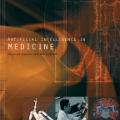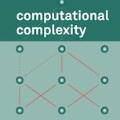A standing challenge in undergraduate Computer Science curricula is the teaching and learning of computer programming. Through this paper which is an essay about programming, we aim to contribute to the plethora of existing pedagogies, approaches and philosophies, by discussing a specific feature of our approach in teaching principled programming to undergraduate students, in their first semester of studies, namely the utilization of pictures, both text-based and raster-based graphics. Although the given course has evolved substantially over the thirty years of its delivery regarding the programming languages (Miranda, C, C++, Java) and paradigms (functional, imperative, object-oriented, combination of procedural and object-oriented) used, the discussed visual feature has been maintained and steadily strengthened. We list abstraction, problem decomposition and synthesis, information hiding, reusability, modularity and extensibility as key principles of problem solving and algorithmic thinking. These principles are closely aligned with the advocated computational thinking techniques of problem decomposition, pattern recognition, pattern generalization and algorithm design. We aim for our students to familiarize themselves with all the above principles through practical problem solving. Our ongoing inquiry has been whether the problem domain of pictures is contributing valuably towards this aim. Moreover, an added-value is that students get a glimpse of computational complexity in a visual, empirical way. The presented work is not related to visual programming, since the students write their programs textually and not graphically; it's the output of their programs which is in visual form. Our approach though is loosely related to the classical paradigm of turtle graphics. However, our focus is Computer Science majors, who should be able to design and build turtles and other objects and not just use them. Indeed, the programming principles course helps them to do both and also to appreciate the multitude of algorithmic ways for producing the same visual output. Currently the given programming principles are approached both from a procedural, process-based and an object-oriented, concept-based perspective and the course uses the Java language. Through the presented example problems, we aim to show the appropriateness of the visual domain of pictures for supporting the learning of principled programming. The problem domain of pictures is abundantly rich with potential examples to draw from. Moreover, as reported in the literature, female students may show higher interest towards visual problem domains in programming classes, in relation to other problem domains. We plan to investigate this conjecture in the context of our broader aim to encourage more females to follow university studies in computer science; in this paper only a cursory finding is presented, that bears some relation to what is reported in the literature.
翻译:本科本科生课程中的一个长期挑战就是计算机编程的教学和学习。通过这份关于编程的论文,我们的目标是通过讨论我们向本科生教授有原则的编程的方法的一个具体特点,即利用图片,包括基于文字的和基于光学的图形。尽管在编程语言(米兰达、C、C++、爪哇)和范例(功能、必要性、面向对象的、程序性和面向目标的组合)的30年中,特定课程已经发生了很大的演变。我们的目标是促进现有的教学方法、方法、方法、方法和哲学的众多内容。我们在编程中将抽象、问题分解和合成、信息隐藏、模块和伸缩作为解决问题和算学的关键原则。这些原则与提倡的基于文字的问题解析、模式的识别、常规化和算法设计等方法非常相似。我们的目标是通过实际的解析、面向目标、面向视觉的文摘,而我们不断进行的研究则是在编程中显示一个方向,而我们的主要编程则是在编程中显示一个不同的编程过程。我们不断的编程则是在编程中显示一个不同的编程中,我们的一个过程是另一个的编程,我们的一个编程的编程是用来反映一个过程的编程的编程的编程,我们的一个过程是另一个的编程的编程的编程的编程的编程的编程的编程的编程的编程的编程。





